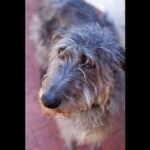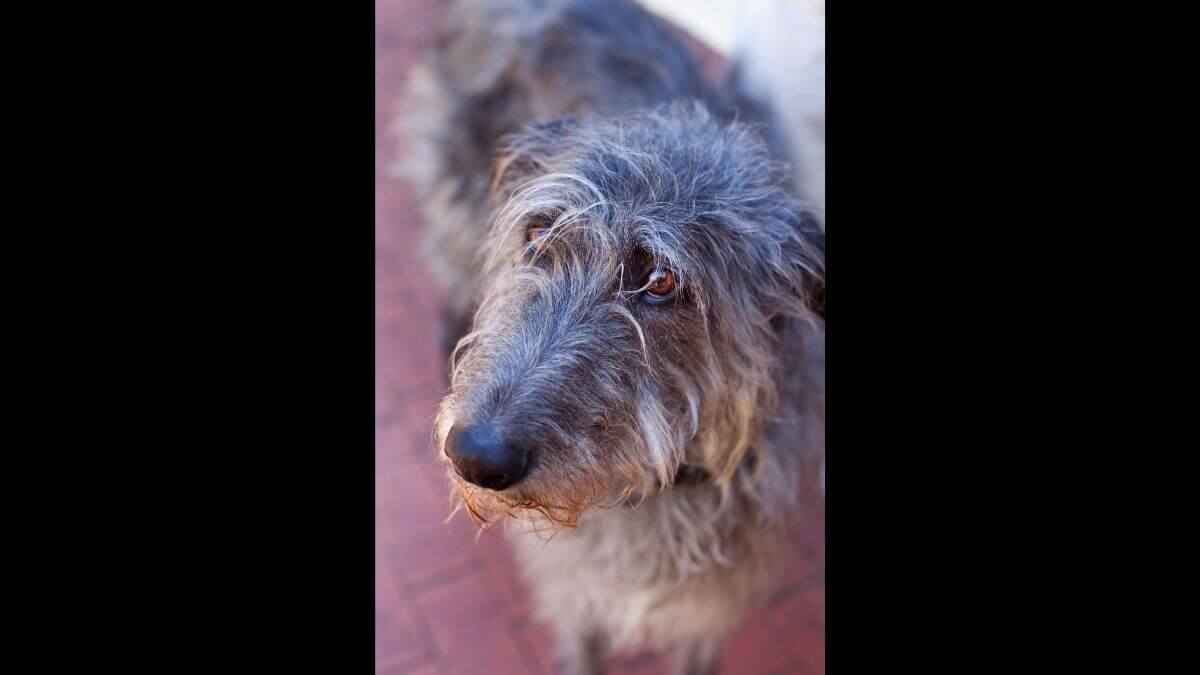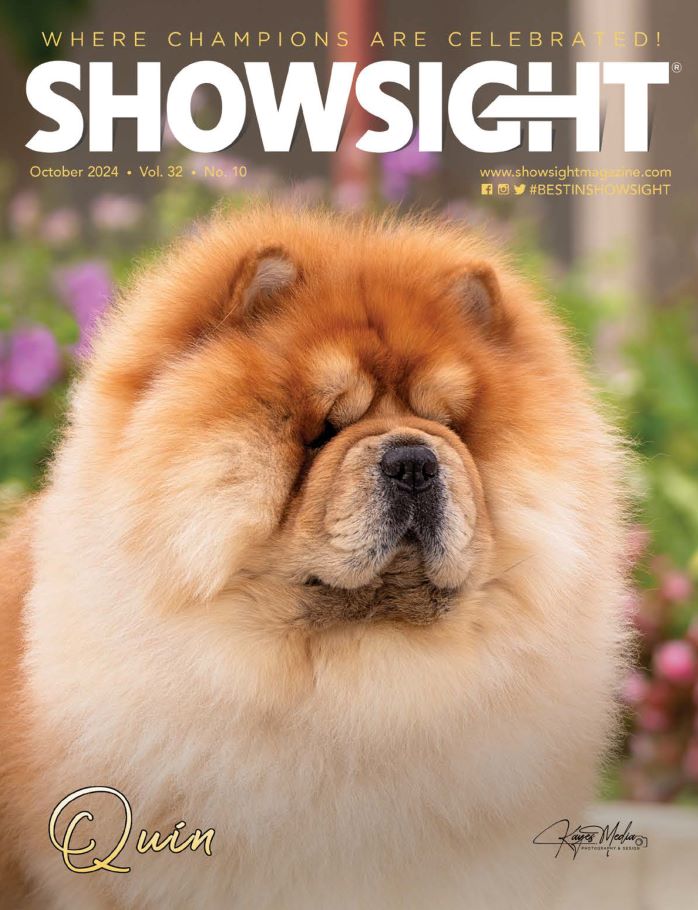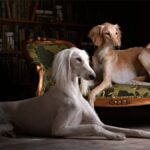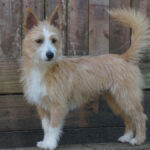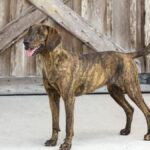This article was originally published in Showsight Magazine, June 2011 issue.
History and Judging of the Scottish Deerhound
History
The Scottish Deerhound is an ancient breed, whose exact origins are unknown; but clearly they are a development from the old coursing Greyhounds, and are related to the larger Irish Wolfhounds. Names for the breed in history have included Scotch Greyhound and Highland Deerhound. Reference is made to their development in a passage in English Dogges (1576), referring to Greyhounds: “Some are of the greater sorte, some of a lesser; some are smoothe skynned and some curled, the bigger therefore are appointed to hunt the bigger beastes, the buck, the hart, the doe.”
By the 17th century, the term Deerhound was applied to the type used to pursue and bring down the Scottish Red Stag, akin to the American Elk, which is a very large deer. From these came the Deerhound seen today, known as the Scottish Deerhound in America.
Throughout history, Deerhounds were greatly valued for their hunting prowess and companionable nature, primarily owned by the nobility, who had the large tracts of land needed for deer coursing. Legend has it that a nobleman condemned to death could buy his freedom with a “leash” of Deerhounds, with “leash” meaning three in number. As the Stag became rarer in England and southern Scotland in the 1700s, breeding of Deerhounds became more confined to the northern Scottish Highlands, with the smaller Greyhound being used for hare coursing in other areas.
The collapse of the clan system in the mid-1700s further reduced the number of breeders and Deerhounds. It wasn’t until Archibald and Duncan McNeill (later Lord Colonsay) worked to restore the breed in the 1820s that numbers began to increase gradually, and the quality regained. They started appearing at dog shows in England in the mid-1800s. Queen Victoria became a Deerhound fancier and helped its popularity to expand, as did Sir Walter Scott, a Deerhound owner, who deemed the breed “the most perfect creature of heaven.”
The breed came to America originally for hunting purposes—General Custer kept Greyhounds and Deerhounds and their crosses, for instance—and was recognized by the American Kennel Club for showing purposes in 1886.
The World Wars hurt breeders of many breeds and the number of dogs being bred. During World War II, the Deerhound was precariously preserved by a few dedicated British Isles breeders, including the kennels of Ardkinglas, Rotherwood, Ross, Enterkine, and Geltsdale, who worked hard to keep the breed alive. American breeders gradually increased, and Deerhounds have been exported to Australia (where they are used successfully on kangaroos) and mainland Europe, with a few in other areas of the world. They remain quite a rare breed, though the spectacular Best in Show win by a Deerhound at Westminster Kennel Club in 2011 has made more people aware of the breed.
It is claimed that the Deerhound of today is still very similar to the Deerhounds of yesteryear, and old prints attest this to be true. Though the Breed Standard of the late 1800s, still used today, allowed for a slight increase in size, the capability to work and hunt big deer should still be apparent when viewing a modern Deerhound.
Judging
What many judges notice when viewing the Scottish Deerhound ring is that the dogs, while having a certain natural presence and elegance, are often not sparkly show dogs. The handlers are often owners and/or amateurs. While many of them are quite competent, a number of them are not. It is therefore incumbent upon the judge to look past handling ability to the dog itself and judge each individual on its relative merits, rather than just their presentation, and to be helpful to handlers still learning the ropes.
That said, the dog should be immediately identifiable as a Deerhound—specifically, a larger rough-coated coursing type Greyhound—with no confusion as to whether it’s a Wolfhound. One should get a strong impression of a good blend of ruggedness and elegance, of strength and speed, of dignity with a sense of humor.
The dog should be temperamentally stable, friendly enough without necessarily being effusive, and not offering aggression towards other dogs (or humans, naturally, but that is rare). It has been said that the Deerhound, while sweet and gentle, should still own the ground it stands on.
The Standard outlines the various important features of the breed and should be closely studied by anyone looking to judge the breed. The standard was not reformatted, and is the same as it’s been for many years, so some references are historic and specific to the breed.
The size of Deerhounds was raised by a couple of inches with the current Standard, but it is cautioned that very large Deerhounds may not be functional; excessive size is generally not championed in the breed unless it is accompanied by great quality, which it only sometimes is.
Balance is greatly valued, though it also offers a quandary—if a dog is balanced because it is lacking on both ends, is that better than a dog who is correct on one end but not the same on the other? As a breeder, I would personally rather only have one end to fix genetically; obviously having both ends match and be proper is ideal.
Most often, an unbalanced dog has more rear than front angulation, though occasionally it’s the other way around. How the dog puts its various parts together on the move can be the deciding factor.
Many judges will have the dogs go around the ring together first to help settle them and get an idea of how they handle themselves. In the exam, functional aspects should be considered more important than cosmetic ones, though of course the best dogs have both.
The judges who consider the whole dog, mentally adding up the virtues and then subtracting the faults, and giving those with the highest “score” the nod, are better. Rather than eliminating a dog from consideration just because of a particular fault (being a “fault judge”), they should do so only if that fault is excessive shyness or aggressiveness.
Puppies and newcomer dogs obviously should be forgiven some nerves or hijinks, and should be judged compassionately and patiently.
Movement—the standard gives it just three words, but they are telling ones—it says that the Deerhound’s movement should be “easy, active, and true.” Easy and true are fairly self-evident; the easy meaning a nice flowing side gait, and the true meaning sound coming and going.
The active is more open to interpretation, but the typical Deerhound trot has a lovely and rather unique “lilt” and suspension, covering a little extra ground in the air with each stride without being extreme or too bouncy. This trait may have descended from those needed for the rough terrain the Deerhound used to hunt on in the Scottish moors, where having a certain tendinous and ligamentous elasticity allowed the dog to spring over heather and gorse in pursuit of its quarry.
Active should NOT be interpreted to mean hackneyed gait at the trot—this seems to be one trotting trait that does translate to the gallop, and negatively so. A hackneyed gallop is energy-wasting and not fast and ground covering, or especially agile. Hackneyed gait is not often seen in Deerhounds, happily, but should be appropriately faulted when it is seen.
It’s unknown whether the order of the movement traits (easy side gait, active side gait, and true coming and going) was meant to be put in descending order of importance, but many fanciers consider that a typical side gait is most highly important in a quality Deerhound. Sound coming and going is also important, but if it’s at the expense of side gait, may not be quite as much so.
Deerhounds in general are sounder now than they were many years ago; but again, it should not be at the expense of the typical way of moving from the side. For those into horses, a Deerhound’s typical trot can perhaps be compared to a Third Level dressage horse doing a working or medium trot—big and open and flowing but not excessively fast or flashy.
Other aspects to consider—conditioning and musculature are very important in any sighthound, but this can also present another quandary: how to compare a well-made but “soft” or underconditioned dog to one who is less well made but well conditioned?
Again remember genetics and value inherent genetic traits more than developed ones, and functional traits more than cosmetic ones. If possible, knowing which traits are easier to fix genetically can help—the more genetically persistent bad traits should perhaps be faulted more heavily than others which are known to be faster to change.
In the case of a good dog with less good developed traits (conditioning, grooming, show manners, etc.), a brief polite discussion with the handler might alert them to what they could do to present their dog better in the future.
In conclusion, when judging the Scottish Deerhound, think “Big Deer”—the Deerhound’s original prey, the Scottish Red Stag, is like our American Elk, so a formidable foe requiring enough speed and endurance to catch up to, and enough strength and persistence to bring to bay or bring down.
This royal hunter also had to be a great companion in the manor or castle to adults, children, and other animals; and be stable, quiet, and dignified while still fun to be around. The “fun” part of a Deerhound’s personality may not be readily apparent at the show grounds, but at least the dignity and the look of the original purpose can be.
And finally, thank you for judging our Deerhounds fairly and kindly; we do appreciate it!
